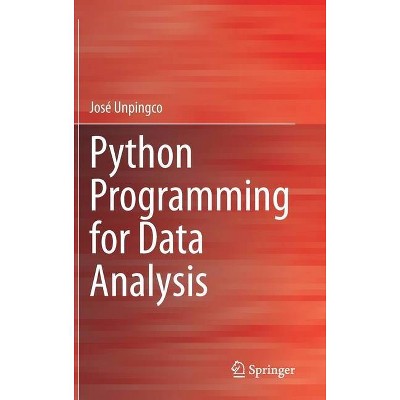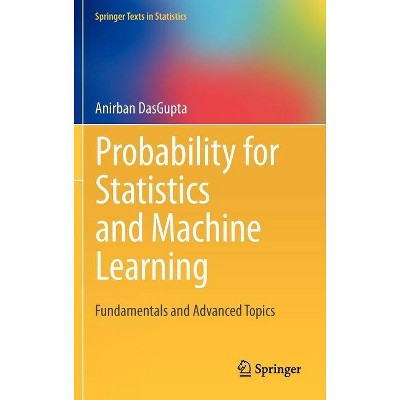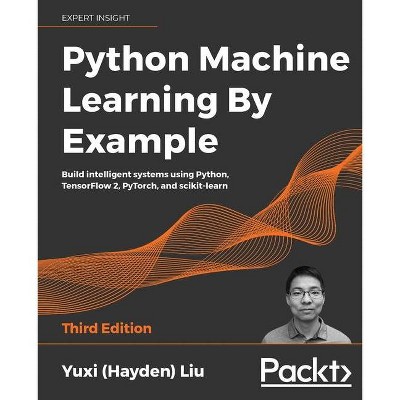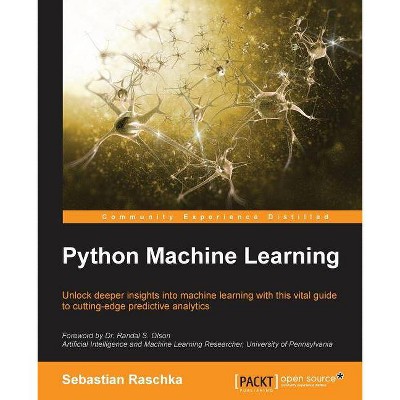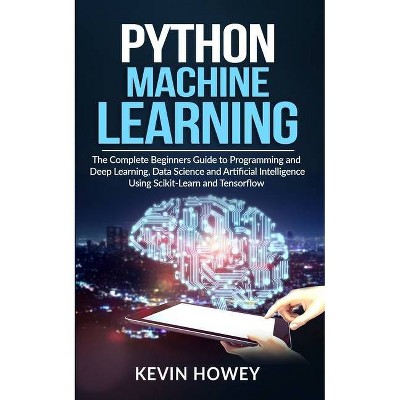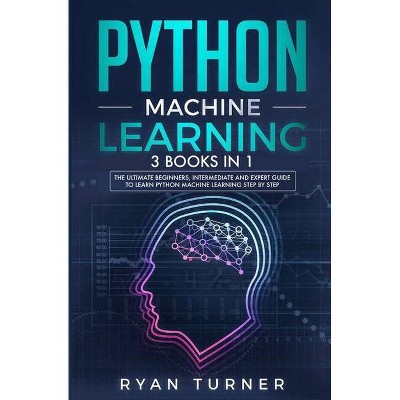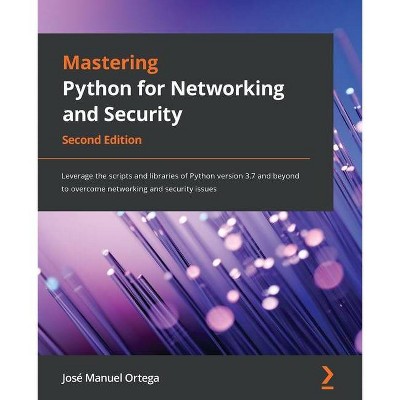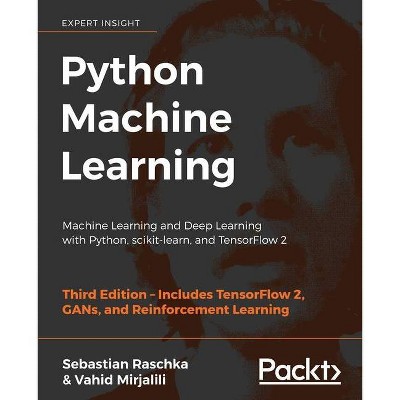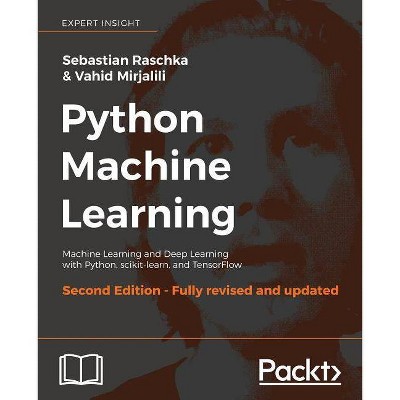Python for Probability, Statistics, and Machine Learning - 2nd Edition by José Unpingco (Paperback)
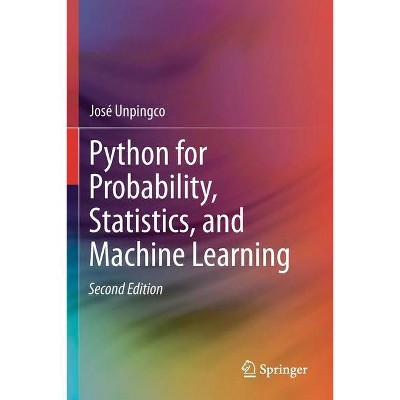
Similar Products
Products of same category from the store
AllProduct info
<p/><br></br><p><b> Book Synopsis </b></p></br></br>This book, fully updated for Python version 3.6+, covers the key ideas that link probability, statistics, and machine learning illustrated using Python modules in these areas. All the figures and numerical results are reproducible using the Python codes provided. The author develops key intuitions in machine learning by working meaningful examples using multiple analytical methods and Python codes, thereby connecting theoretical concepts to concrete implementations. Detailed proofs for certain important results are also provided. Modern Python modules like Pandas, Sympy, Scikit-learn, Tensorflow, and Keras are applied to simulate and visualize important machine learning concepts like the bias/variance trade-off, cross-validation, and regularization. Many abstract mathematical ideas, such as convergence in probability theory, are developed and illustrated with numerical examples. <br>This updated edition now includes the Fisher Exact Test and the Mann-Whitney-Wilcoxon Test. A new section on survival analysis has been included as well as substantial development of Generalized Linear Models. The new deep learning section for image processing includes an in-depth discussion of gradient descent methods that underpin all deep learning algorithms. As with the prior edition, there are new and updated *Programming Tips* that the illustrate effective Python modules and methods for scientific programming and machine learning. There are 445 run-able code blocks with corresponding outputs that have been tested for accuracy. Over 158 graphical visualizations (almost all generated using Python) illustrate the concepts that are developed both in code and in mathematics. We also discuss and use key Python modules such as Numpy, Scikit-learn, Sympy, Scipy, Lifelines, CvxPy, Theano, Matplotlib, Pandas, Tensorflow, Statsmodels, and Keras.<br>This book is suitable for anyone with an undergraduate-level exposure to probability, statistics, or machine learning and with rudimentary knowledge of Python programming.<p></p><p></p><p/><br></br><p><b> From the Back Cover </b></p></br></br><p></p><p>This book, fully updated for Python version 3.6+, covers the key ideas that link probability, statistics, and machine learning illustrated using Python modules in these areas. All the figures and numerical results are reproducible using the Python codes provided. The author develops key intuitions in machine learning by working meaningful examples using multiple analytical methods and Python codes, thereby connecting theoretical concepts to concrete implementations. Detailed proofs for certain important results are also provided. Modern Python modules like Pandas, Sympy, Scikit-learn, Tensorflow, and Keras are applied to simulate and visualize important machine learning concepts like the bias/variance trade-off, cross-validation, and regularization. Many abstract mathematical ideas, such as convergence in probability theory, are developed and illustrated with numerical examples.</p> This updated edition now includes the Fisher Exact Test and the Mann-Whitney-Wilcoxon Test. A new section on survival analysis has been included as well as substantial development of Generalized Linear Models. The new deep learning section for image processing includes an in-depth discussion of gradient descent methods that underpin all deep learning algorithms. As with the prior edition, there are new and updated *Programming Tips* that the illustrate effective Python modules and methods for scientific programming and machine learning. There are 445 run-able code blocks with corresponding outputs that have been tested for accuracy. Over 158 graphical visualizations (almost all generated using Python) illustrate the concepts that are developed both in code and in mathematics. We also discuss and use key Python modules such as Numpy, Scikit-learn, Sympy, Scipy, Lifelines, CvxPy, Theano, Matplotlib, Pandas, Tensorflow, Statsmodels, and Keras. <p></p>This book is suitable for anyone with an undergraduate-level exposure to probability, statistics, or machine learning and with rudimentary knowledge of Python programming.<p></p><p></p><p/><br></br><p><b> Review Quotes </b></p></br></br><br><p>"The book is aimed primarily at intermediate or advanced Python programmers ... . this work is a generally sound and comprehensive overview of the areas it covers. We recommend it to Python programmers interested in growing in these areas or experts in these areas interested in learning how to deal with them in Python." (Eugene Callahan and Yujia Zhang, Computing Reviews, October 15, 2020)</p><br><p/><br></br><p><b> About the Author </b></p></br></br>Dr. José Unpingco completed his PhD at the University of California, San Diego in 1997 and has since worked in industry as an engineer, consultant, and instructor on a wide-variety of advanced data processing and analysis topics, with deep experience in machine learning and statistics. As the onsite technical director for large-scale Signal and Image Processing for the Department of Defense (DoD), he spearheaded the DoD-wide adoption of scientific Python. He also trained over 600 scientists and engineers to effectively utilize Python for a wide range of scientific topics -- from weather modeling to antenna analysis. Dr. Unpingco is the cofounder and Senior Director for Data Science at a non-profit Medical Research Organization in San Diego, California. He also teaches programming for data analysis at the University of California, San Diego for engineering undergraduate/graduate students. He is author of <i>Python for Signal Processing</i> (Springer 2014) and P<i>ython for Probability, Statistics, and Machine Learning</i> (2016)
Price History
Price Archive shows prices from various stores, lets you see history and find the cheapest. There is no actual sale on the website. For all support, inquiry and suggestion messages communication@pricearchive.us
